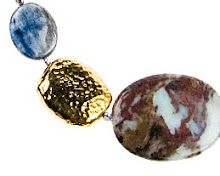
Dear Professor Pearl,
I still don’t quite get it… What are the differences between saltwater and freshwater pearls?
Linda,
Hamilton, Ontario
Great question, Linda! Freshwater and saltwater pearls definitely have their differences. However, all pearls are made in the same way. When a small piece of sand or other debris gets stuck inside the mollusk’s shell, it is slowly coated by layer after layer of nacre, also known as mother of pearl. Eventually, the intruding particle is ejected back into the water as a finished, natural pearl. Since this process can take as long as several years, culturing pearls in farms was developed by Japanese scientists in the early 20th century. The outside of a cultured pearl is still made entirely of nacre- which gives it the natural pearls’ trademark iridescent lustre- but the inside is actually a core of other organic materials placed inside the shellfish to produce pearls in 6 months or less. What’s more is that cultured pearls are very hard to distinguish from totally natural ones, even with the help of scientific instruments. These days, natural pearls are rare and difficult to retrieve, so the vast majority of both saltwater and freshwater pearls are cultured in farms.
Saltwater pearls come from oysters that reside in, you guessed it, oceans and seas. They are usually more round than freshwater pearls, which are often a potato-like shape. Different colours are common among saltwater pearls depending on where they come from. Soft pink is the natural hue, but steely grey and purple pearls are also found in Tahitian waters, and Australian seas are known for light grey, white, and slightly golden pearls. Pearls from the South Seas can also get very big, but are lacking in the surface quality and market value of, say, the Japanese Akoya pearl. It can generally be said that saltwater pearls are more expensive than freshwater pearls because they are rarer and harder to farm; storms in open water and oyster diseases are the culprits of many a lost pearl, and saltwater pearl operations are costly at the best of times.
Freshwater pearls come from mussels that live in rivers, streams, and lakes. They are available in a wider variety of colours like white, cream, pink, lilac, and peach, but are also commonly dyed to produce a virtually limitless palette. Again, freshwater pearls aren’t usually as round as saltwater pearls, but they are still judged on the same criteria whether cultured or all-natural: roundness, surface quality, and size.
In summary, saltwater pearls are more expensive because of scarcity and cultivation issues, but freshwater pearls are often indistinguishable anyway. It has been found that specialists cannot, even with the aid of x-rays & ultrasound equipment, tell the difference between a freshwater and a saltwater pearl.
Hope that answers your question, Linda! Thanks for writing.
~Professor Pearl
Write to Professor Pearl with any questions you have about gemstones, precious metals, jewellery making techniques, or the accessory industry: profpearl@stonesandfindings.com

No comments:
Post a Comment